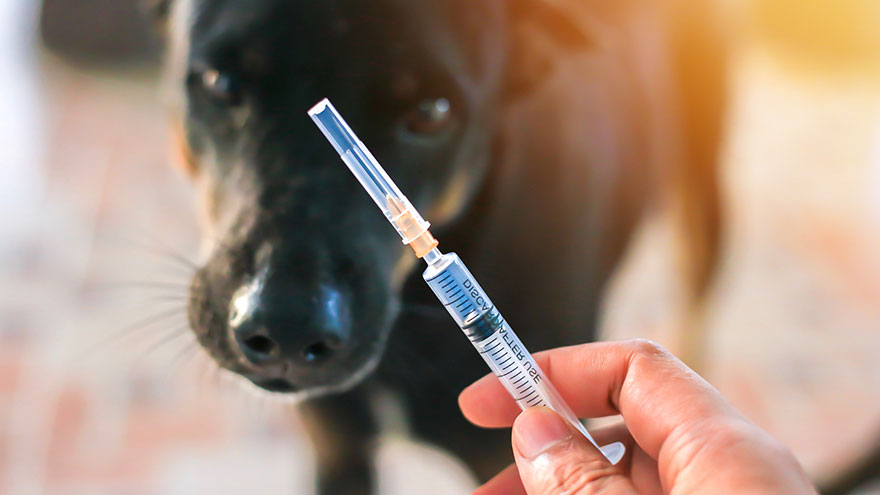Side Effects of Atropine Sulfate in Dogs
If your dog has an eye problem such as corneal ulcers or inflammation inside the eye, a vet may prescribe atropine sulfate to ease his discomfort. Atropine sulfate will cause the pupil to dilate, and it may decrease tear production. Proper administration of atropine sulfate reduces the possibility of other side effects.

About Atropine Sulfate
Atropine affects the parasympathetic nervous system, the portion of the nervous system that preserves energy. It prevents the spread of acetylcholine, a chemical that controls certain activities, including pupil constriction and dilation. Atropine sulfate works by paralyzing the iris’ sphincter muscle, causing the pupil to dilate. It’s a powerful drug, having effects that last up to a week in some animals.
Atropine sulfate is topical, available in solution or ointment form. Its effects make it useful a variety of ways: It stops iris spasms, acts as a pain reliever and dilates the pupil, helpful for ocular surgery or inflammation.
Atropine Sulfate Side Effects
Used properly, atropine sulfate causes few side effects. Your dog’s eyes may sting for a short time after a dose of atropine sulfate. With his pupil dilated, he may be more sensitive to light. Repeated use of atropine sulfate can result in loss of tear production. If your dog ingests atropine sulfate — perhaps your hand wasn’t so steady, or maybe he moved his head — he’ll likely salivate excessively. Too much atropine can cause constipation, vomiting and dry mouth, as well as fever, changes in heart rate and an inability to urinate.
Contraindications of Atropine Sulfate
Atropine sulfate isn’t for every eye condition. A dog with glaucoma or a tendency for glaucoma shouldn’t take this medication. As well, a dog with lens luxation, the separation of the lens from its eye attachments, should not receive atropine sulfate. Atropine sulfate may interact with other medications. Review dosing instructions for atropine sulfate with your vet, particularly if your dog is taking other medications; there may be specific requirements for order of medication administration or interval between medications.
Administering Atropine Sulfate
Wash your hands before administering your dog’s medication, then wipe his eye with a moist cloth to remove any discharge. Tilt your dog’s head back so he’s looking at the ceiling; hold his eyelid open with one hand and the atropine sulfate in the other. Take care to keep the tip of the bottle away from his eyeball in case he moves suddenly. Apply the medicine to his eyeball, ensuring you don’t touch his eye with the bottle tip, contaminating the medicine. Allow your dog to blink to distribute his medicine over his eye. Wash your hands again before giving him a biscuit for being a good patient.
You Might Also Like :: Salivary Gland Tumors in Dogs

